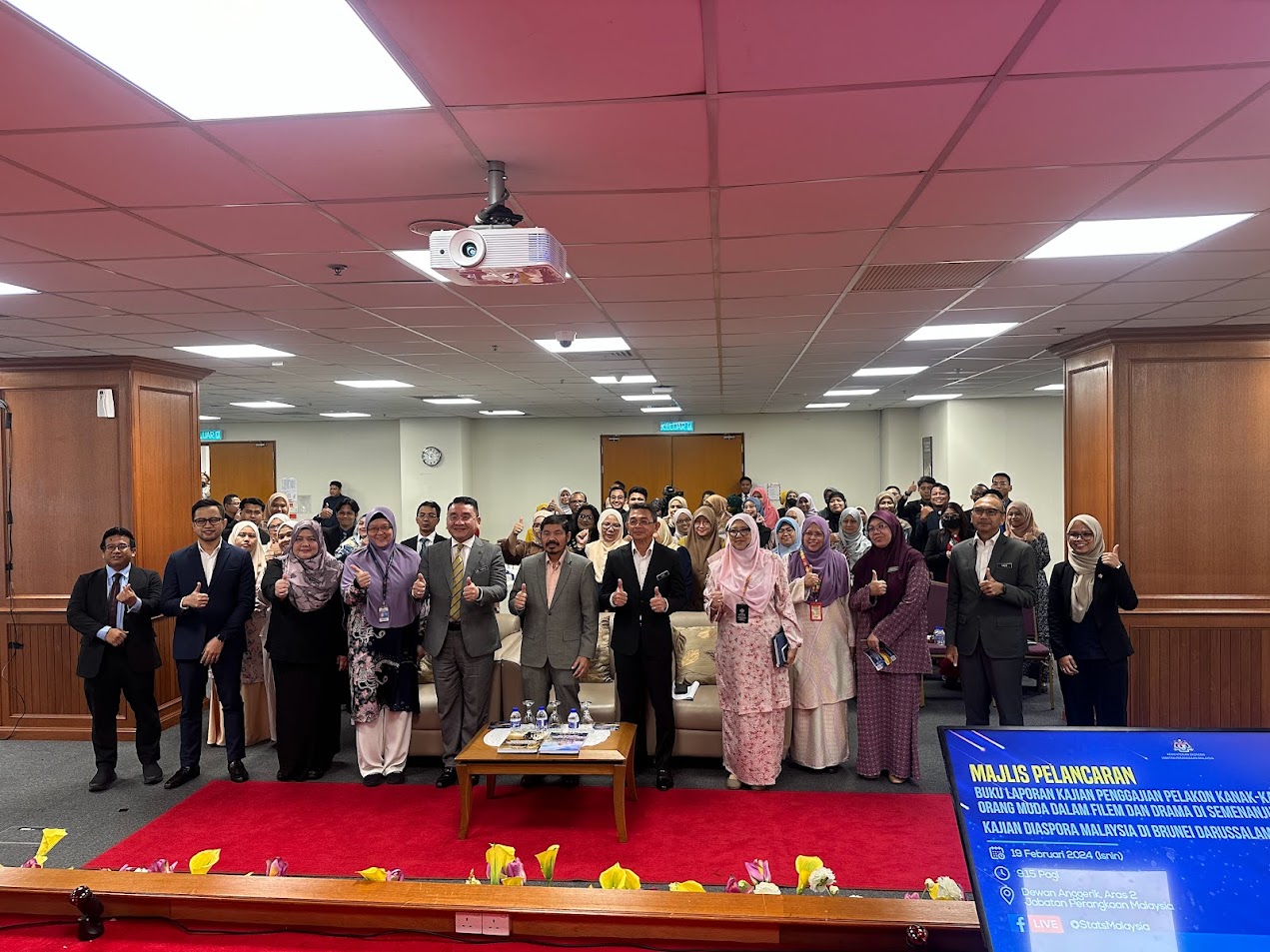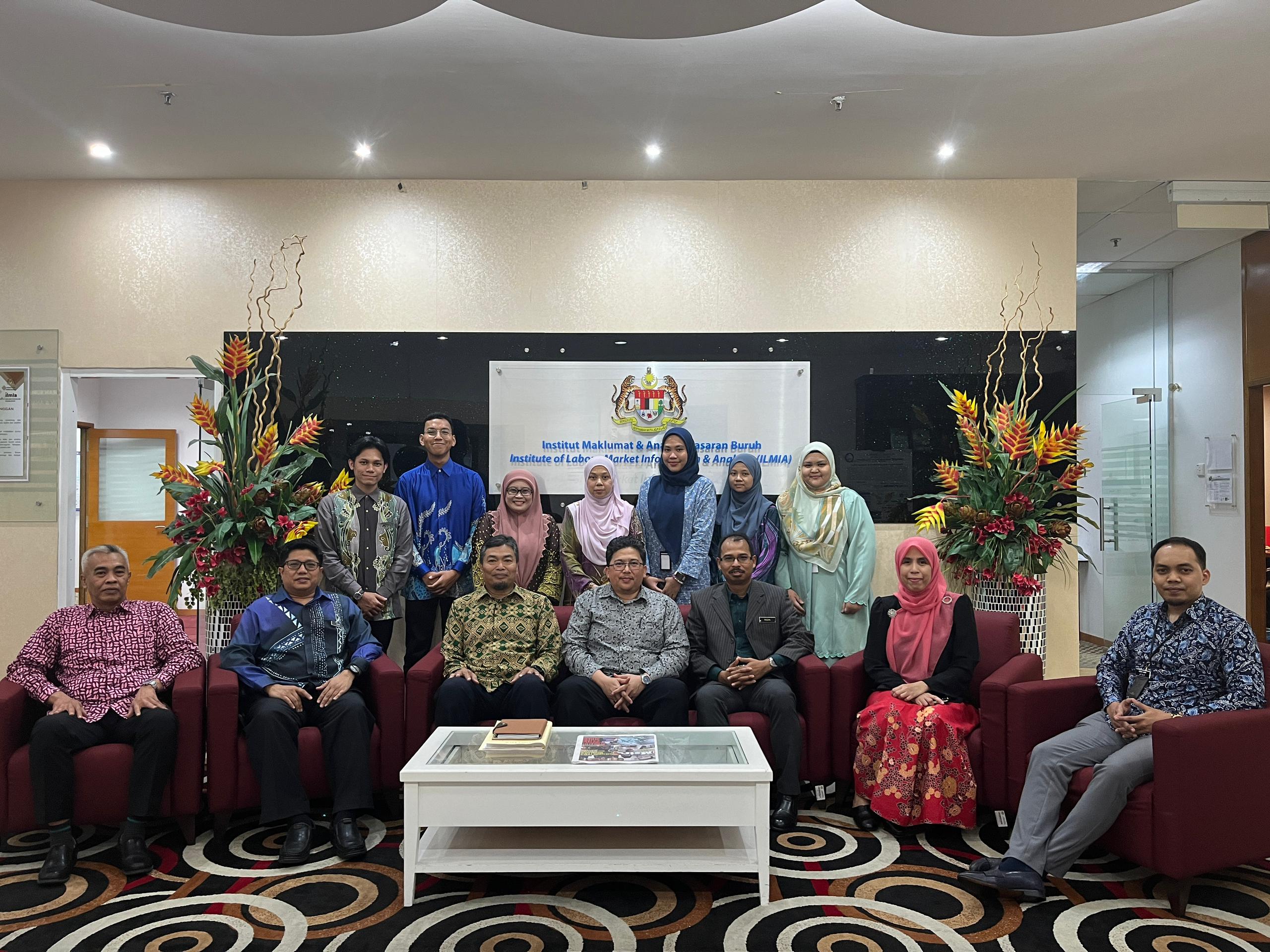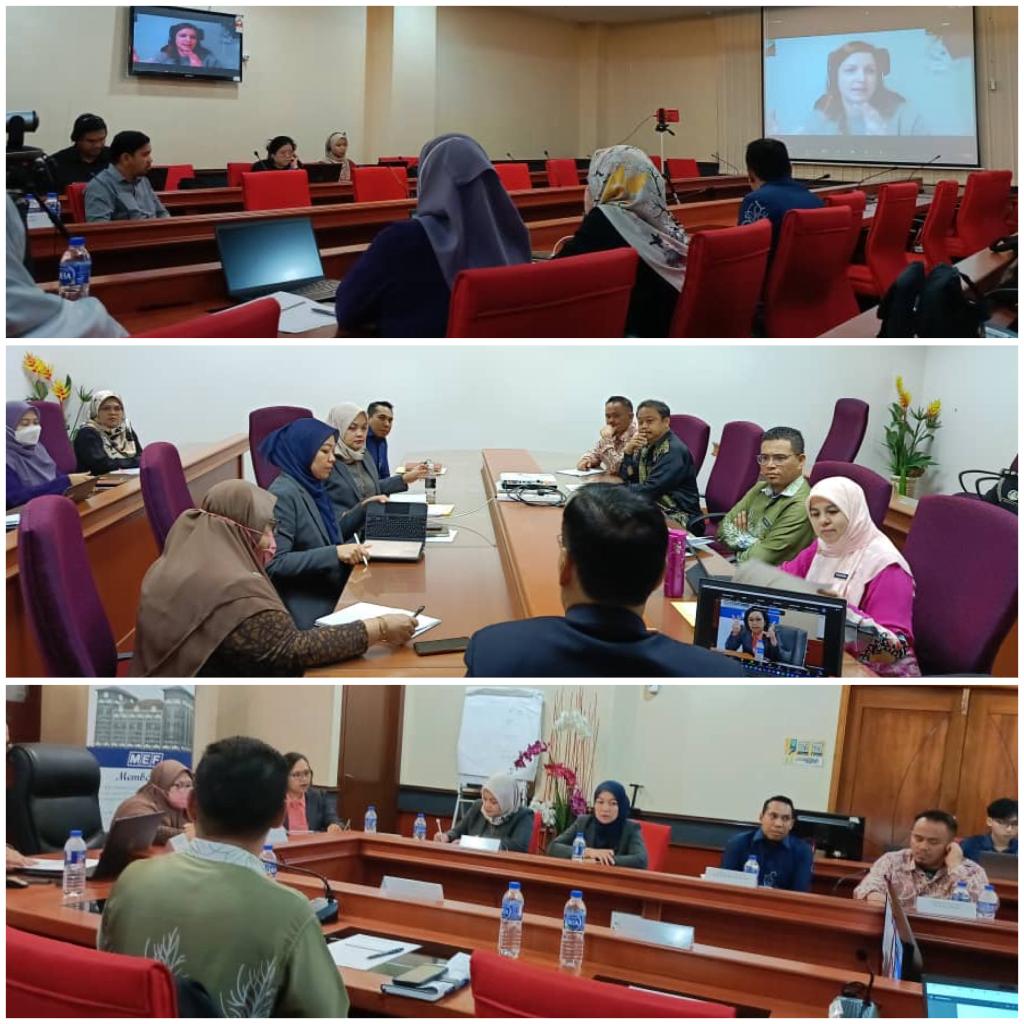Hours of work
Click here for detail indicatorsIntroduction & Background

The objective of KILM 7 is to show the amount of time an employed person devotes to work activities (see Box 1 for some definitions). Two primary indicators are used for this purpose. The first indicator is a measure of the number of hours an employed person works per week. The ILO recommends that this work hours per week measure be depicted by six time bands of: a) less than 25 hours; b) between 25 and 34 hours; c) between 35 and 39 hours; d) 40 hours and over; e) between 40 and 48 hours; and f) between 49 and 59 hours. Where available countries may add two additional time bands of 50 hours plus and 60 hours plus. In Malaysia, the work hours per week measure presented here utilizes four bands comprising: a) less than 20 hours; b) between 20 and 29 hours; c) between 30 and 39 hours; and d) 40 hours and over.
The second KILM 7 indicator captures the annual average hours actually worked per employed person. In most instances, countries and research institutions derive this indicator from the data from hours worked per week of the overall employed workforce, employing in the process appropriate weights and other statistical adjustments. Some countries also use and combine information from establishment surveys or those coming from the System of National Accounts Framework, in which case the information may focus mostly on wage or salaried workers. This indicator of annual work hours for Malaysia is not provided here and we hope to have it available in the next update of the ILMIA dashboard.
In general work time measures the “hours usually worked” in the reference period of a typical work schedule (say one week). This concept needs to be contrasted with the measure of “hours actually work” which represents the modal value of work time over a longer period, i.e. one year. The modal value of the work time is a number or value that appears most often within a set of data. Hours of work are measured for all categories of workers (KILM3 – employment status), whether with or without formal contracts, paid or unpaid, and including the self-employed and family workers. Work time is counted in all locations whether at the physical workplace, in the field, at home, on the road, on business trips, etc. While most often it is expected to cover workers in the formal sector of the economy, there is no reason why it would not also cover workers in the informal sector since this indicator is often collected through household surveys.
In 2008, the 18th International Conference of Labour Statisticians (ICLS) adopted a resolution concerning the measurement of work time. The resolution revised the previous standards on work time set in the 13th conference in 1962, providing better technical guidance and measurement methodologies and guidelines on an expanded menu of indicators aimed at improving the consistency and international comparability of this statistic. The definition for seven concepts of work time of an employed was set forth:
- Hours actually worked, the key concept of working time defined for statistical purposes applicable to all jobs and to all working persons. Measures time spent in a job for activities that contribute to the production of goods and/or services during a specified reference period. Includes direct hours, related hours, down time and resting time.
- Hours paid for, linked to remuneration of hours that may not all correspond to production.
- Normal hours of work, refers to legally prevailing collective hours.
- Contractual hours of work, individuals are expected to perform according to contractual relationships as distinct from normal hours.
- Hours usually worked, most commonly in a job over an observation period. Measures regular hours worked above contractual hours.
- Overtime hours of work, performed beyond contracts or norms.
- Absence from work hours, when working persons do not work.
In Malaysia, KILM 7 information is captured from Labour Force Surveys conducted by the Department of Statistics Malaysia (DOS). This KILM can be further disaggregated by gender, age group and employment status of employers, employees, self-employed and own account workers.
Box 1: Hours of work
Measuring the level and trends in work time for different groups of persons and for individuals is important when monitoring working and living conditions as well as for analysing economic and broader social developments. In recent years, the use of KILM 7 has drawn increasing attention from two dimensions. The first aspect groups discussions around macroeconomic issues. For example, it has been argued that in the context of the recent global financial crisis developed economies have seen sharp losses in output, with many countries suffering steep increases in and also prolonged unemployment. However, many countries have since experienced some stability in unemployment rates, which has been attributed to adopting flexibility in employment time or hours. The most common practice has been to retain the worker on the payroll but adjust the number of hours worked. For firms the number of hours put in by employees affect the production costs and have implications in determining productivity calculations. Annual hours actually worked in particular are usually used for productivity estimates (output per hour worked) in combination with National Accounts and by economic sectors and sub-sectors wherever sufficiently granular statistical information may be available. There has been increasing interest on the part of both employers and employees in enhancing the flexibility of work time arrangements, while moving away from traditional or standard work time plans. Depending on the industry and occupation, employees have increasing options on work time arrangements. Work time flexibility may be bundled into day or night shifts or weekends; into longer than daily and weekly durations like two-weekly or monthly periods. Workers may thus enter and leave the workplace at different times during a day and increasingly account for work time not only at the physical workplace but also elsewhere, including especially from home. Consequently, it is also becoming a challenge to measure the weekly work time of a worker.
A second facet in KILM 7 focuses on the health and well-being of workers directly stemming from the hours they need to work. For example, workers in some developing countries must by necessity be required to work very long hours to secure a decent level of income to support their families because wage levels are wretched. Long working hours may have a negative impact on family and community life. Work time in excess of 50 hours per week is normally considered to be excessive. Long work hours may be voluntary or involuntary giving rise to the notion of “over-employment” where a worker actually desires to work less in the reference period with a corresponding adjustment in earnings. However, this personal choice is unknown and depends very much on cultural norms, the level of economic development and the wages paid.
Work time in excess of 50 hours per week is normally considered to be excessive.
Why KILM 7 on Hours of Work is important?
Measuring the level and trends in work time for different groups of persons and for individuals is important when monitoring working and living conditions as well as for analysing economic and broader social developments. In recent years, the use of KILM 7 has drawn increasing attention from two dimensions. The first aspect groups discussions around macroeconomic issues. For example, it has been argued that in the context of the recent global financial crisis developed economies have seen sharp losses in output, with many countries suffering steep increases in and also prolonged unemployment. However, many countries have since experienced some stability in unemployment rates, which has been attributed to adopting flexibility in employment time or hours. The most common practice has been to retain the worker on the payroll but adjust the number of hours worked. For firms the number of hours put in by employees affect the production costs and have implications in determining productivity calculations. Annual hours actually worked in particular are usually used for productivity estimates (output per hour worked) in combination with National Accounts and by economic sectors and sub-sectors wherever sufficiently granular statistical information may be available. There has been increasing interest on the part of both employers and employees in enhancing the flexibility of work time arrangements, while moving away from traditional or standard work time plans. Depending on the industry and occupation, employees have increasing options on work time arrangements. Work time flexibility may be bundled into day or night shifts or weekends; into longer than daily and weekly durations like two-weekly or monthly periods. Workers may thus enter and leave the workplace at different times during a day and increasingly account for work time not only at the physical workplace but also elsewhere, including especially from home. Consequently, it is also becoming a challenge to measure the weekly work time of a worker. A second facet in KILM 7 focuses on the health and well-being of workers directly stemming from the hours they need to work. For example, workers in some developing countries must by necessity be required to work very long hours to secure a decent level of income to support their families because wage levels are wretched. Long working hours may have a negative impact on family and community life. Work time in excess of 50 hours per week is normally considered to be excessive. Long work hours may be voluntary or involuntary giving rise to the notion of “over-employment” where a worker actually desires to work less in the reference period with a corresponding adjustment in earnings. However, this personal choice is unknown and depends very much on cultural norms, the level of economic development and the wages paid.
The Limitations/Comparability
It is obvious that in KILM 7 the indicator for hours usually worked per week are not strictly comparable to the indicator on annual hours actually worked per employed person. It is common that the hours actually worked would normally be higher than the hours usually worked because the latter makes no adjustments for temporary reductions in work time from annual leave, sickness, public holidays, etc. Moreover seasonality in some jobs and long period of absence due to festivity seasons may affect the value of these two work time categories. Another major factor accounting for differences is that in some countries significant numbers of people may have more than one job; the main job and another or a third job. It may become unclear if one is measuring the usual or actual work time on the main job or on all jobs for that person.
For cross country comparisons, as is common for all KILMs, the various data collection and estimation methods of each jurisdiction represent an important source of variation in the work time indicators. For example, in Malaysia the four time bands for weekly work time is different from current ILO norms and the information available in a few other countries. Household based information may contain readings with greater variations in integrity but has wider coverage compared to data obtained from establishment surveys where record keeping may be more standardized and subject to accounting, auditing or disclosure norms but may be limited to salaried/wage formal sector workers. Accordingly, as recommended by the OECD multiple forms and sources of data gathering would be advisable for work time information, using the standards and agreements from the resolution adopted by the 18th International Conference of Labour Statisticians, 2008 (Box 1). More importantly, it should be noted that the hours usually worked per week and the average annual hours of actual work by employed persons should be mainly used for understanding variations in trend over time and should not be utilized for comparing the level of time actually worked between countries at any point in time.
Moving forward
The next update of KILM 7 should try to include analysis of the average annual actual work time per employed persons. We will also attempt to collect more granular information on work time by industry sub-sector, by occupation, by geographic location and where possible by educational attainment. It would be useful to have information for benchmarking against the staistics from countries in the ASEAN region, others at a similar stage of development as Malaysia and developed ones. In the future, developments in work time could also be analysed in combination with information on household income to obtain a broader understanding about trends in and the relationship between household income and work hours. Working with other stakeholders, including from academia, the implications of work hours and health, family and community life could also be examined.
 Bahasa Melayu
Bahasa Melayu  English
English 







